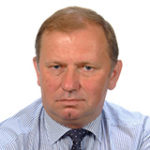Medical education needs a drastic overhaul if we are serious about meeting the 2030 Sustainable Development Goals to achieve universal health coverage and health for all. It is now 41 years since the Alma Ata declaration sought “an acceptable level of health for all the people of the world by the year 2000,” through primary care, and 33 years since the Ottawa Charter for health promotion outlined prerequisites for health that extended beyond medical care. But regardless, medical education has remained firmly focused on producing physicians for secondary or higher level healthcare. This comes at a cost to primary healthcare, and global health.
The Global Health Workforce Alliance report in 2013 advocated for greater use of “mid level healthcare workers” (those trained for 2–5 years to acquire basic skills in diagnosing, managing common conditions and preventing disease.) The Alliance found mid level care is as effective as physicians’ in many situations, so re-allocating funding into mid level training, employment, and support, makes economic sense as it costs at least twice as much to train a doctor than a nurse or other mid-level workers. The resulting increase in the number of health workers could have a big impact on achieving UHC. But the real challenge in making mid level workers (including nurses) effective goes beyond funding allocations, and numbers of workers, and here I return to medical education.
Traditional medical education is grounded in a hierarchy that values specialists over all other health workers, including other doctors. The hierarchy both determines and reinforces what is taught in medical school, which is an excessive focus on the diagnosis and cure of diseases and biomedical pathologies. Yet it is long known that social determinants contribute far more to a population’s health status than individual disease. The hierarchy privileges the work and views of specialists who wield power at all levels of the health system, including management, and this cycle maintains the emphasis on disease and secondary or tertiary care, rather than primary and public health. This creates imbalances and exacerbates serious problems in the performance of health systems, including excessive medicalization, fragmentation in the provision of healthcare, and it undermines the principle of “first do no harm.” Power imbalances ingrained from medical training enable systems of corruption to emerge and persist, and these have a damaging impact on the right to health, with money being directed away from primary healthcare and promotion. Users of services, and less valued health workers including primary care doctors, and non-medical health professionals, are denied the opportunities to participate in the planning, implementation and accountability of health systems, which leaves health services weaker and less responsive to people’s broad health needs.
Primary healthcare contributes the most to health systems when it provides services to 80 per cent of people needing care. Overemphasis on specialist services is expensive and it effectively reduces funding available to train and employ primary health workers, which denies the possibility of universal health coverage being achieved.
However, if medical schools adopted human rights-based approaches to education, the value of primary care workers and services would be recognized. Human rights principles include equality, dignity, interdependence of all human rights, transparency, and participation. Curricula grounded in these principles emphasize the importance of social determinants and promote an understanding in medical students that more participatory and inclusive processes, giving a voice to all health workers, and all users of services, is not only a human right, but provides better and more available care.
Medicine is not an exact science and there is nearly always some uncertainty about the most appropriate way to manage any condition. However, medical training builds the expectation in doctors and users of services that doctors have the knowledge and power to make all decisions, including non-clinical ones, with certainty and confidence. This places physicians under constant stress and leads to burnout. There are many decisions made within healthcare services, including on policy, managerial, diagnostic, preventive and therapeutic issues, which can be led by nurses and non-medical workers.
Efficient use of mid level healthcare workers occurs in health systems that are not overly dependent on specialist physicians and which recognize that ill health does not always require a physician-led response. Where there is greater equality and power shared between primary and secondary care workers, it becomes easier to attract, train, fund and retain primary healthcare workers. When these conditions are met, the attainment of universal health coverage and primary healthcare is more achievable. Low- and middle-income countries, experiencing vast workforce shortages, should value primary healthcare and take great care not to emulate the education systems of high-income countries that are not based on equality, dignity, and other fundamentals of human rights.
For these reasons, my new report “Right of everyone to the enjoyment of the highest attainable standard of physical and mental health,” and delivered to the UN General Assembly today, urges states and medical schools to adopt human rights approaches in medical education to overcome medical hierarchies that privilege specialization and undervalue primary healthcare.
 Dainius Pūras, UN Special Rapporteur on the right to health.
Dainius Pūras, UN Special Rapporteur on the right to health.
Competing interests: None declared
